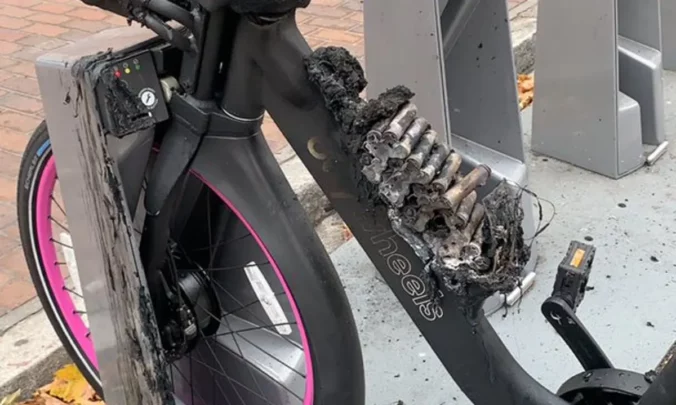Kevin Noel spends his days selling electric bikes and scooters — and helping clients whose vehicles are misbehaving. He’s never had a problem with his own ride, a blue-and-white e-bike decorated with stickers, but he has heard the stories about electric-bike fires and seen his fair share of fried batteries.
Lightweight lithium-ion batteries have become the norm in e-bikes and electric scooters, which power New York City’s massive delivery economy. If properly cared for, these power-packed batteries aren’t inherently dangerous. But they can cause exceptionally destructive fires if they’re broken, refurbished or stored improperly — particularly in bike shops or apartments with multiple batteries inside.
The frequency of fires involving the e-bike batteries is swiftly rising citywide. So far in 2022, the New York City Fire Department says it has investigated close to 70 such fires, including one fatal blaze. Between January and early May 2021, FDNY reported just 18.
If this pace continues, Daniel Flynn, chief fire marshal at the FDNY’s Bureau of Fire Investigation, expects twice as many e-bike fires this year compared to last.
Advocates said that delivery drivers need higher wages to afford better-quality batteries, safe places to charge and education on how to spot a dangerous battery. Usage data is hard to come by, but a report by Los Deliveristas Unidos counted some 65,000 New York City delivery workers in September 2021, most of whom use e-bikes to get around.
The bikes were legalized in 2020 after calls from cycling and delivery worker advocates. Experts say that between the increased reliance on delivery and the need for outdoor recreation, the pandemic pushed e-bikes’ popularity to new heights. Lyft has also gradually added more electric models to the Citi Bike sharing program.
“The tool is not the problem,” Hildalyn Colón Hernández, policy director for Los Deliveristas Unidos, a union for delivery workers, said of the bikes.
The tool is like a car. It’s how to use it safely. But that means education.
